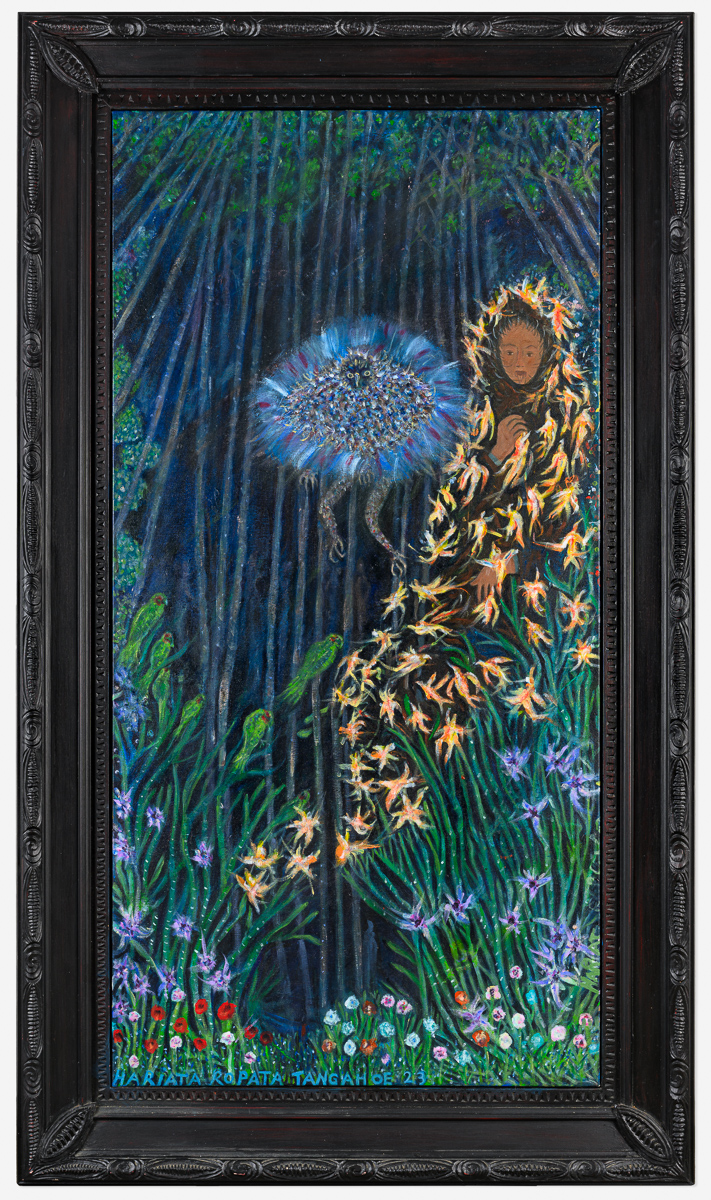TANGAHOE, Hariata Ropata;
Matariki
2002/2023
Acrylic on canvas in frame hand-carved by Leonard Taylor
1220 x 600mm (image); 1430 x 820mm (frame)

Hariata Ropata Tangahoe’s art is grounded in mātauranga Māori, and in her Māori, Celtic, and Italian heritage. Her pieces tend to be dream-like, incorporating symbols that are personal and often mystical. The artist seeks to take the viewer into other spaces and times. Some works evoke the deep past or the realm of pūrākau (customary stories/histories). Others suggest the timeless, otherworldly places of the mind’s eye. Tangahoe has commented that she draws nourishment from a statement once made by Louise Bourgeois: ‘Art is not about art. It is about life, and that sums it up.’
Matariki centres on Matariki (Alcyone in English), the brightest star within the cluster of the same name (Pleiades), which heralds the Māori New Year. In the traditions of various iwi, Matariki is a mother figure, and the other stars are her children. Each is associated with a different entity of importance to humankind (for instance, food from the earth and food from the sky). Matariki is connected with health and well-being, in line with her status as a mother.
Tangahoe offers her own take, rather than repeating the accounts or explanations that have become commonplace in recent years. Matariki appears dressed in a cloak of star-flowers that evoke happiness and celebration. The creature beside her fuses the ruru (morepork) with a fairy. Ruru are often understood to be messengers, bringing news good and bad. The being in this work suggests events on the horizon, events that will unfold over the coming year. Also present are kākāriki (New Zealand parakeets), which allude to an especially blissful period that Tangahoe spent in Pākiri.
Photograph by Stephen A’Court, courtesy of the artist and Bowen Galleries, Te Whanganui-a-Tara.
Provenance
2024–
Fletcher Trust Collection, purchased from the artist, October 2024
